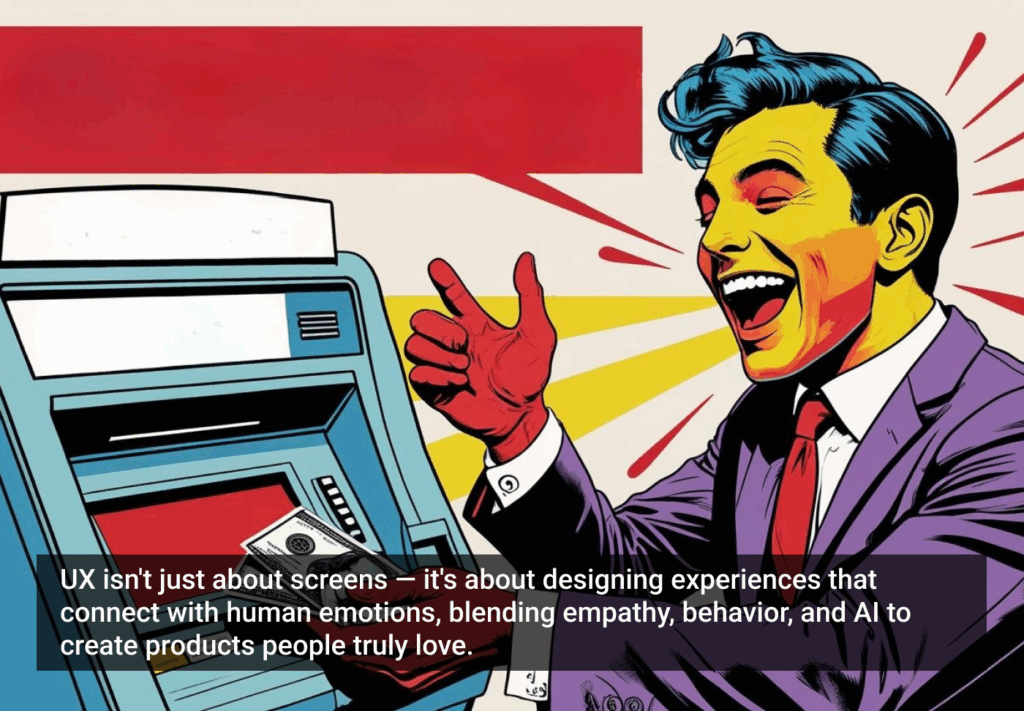This article was originally published in the IDEO journal.
Some speculate that this rising tide might lift all boats, nudging every business to become a subscription business. But as the last six months have shown, the impact of COVID-19 has been unevenly distributed; winners and losers are determined by how favorable their offering is to the everything-from-home context. While all companies are working to make their products and services remote-friendly, this can obscure the fundamental question of how to design a compelling and intentional membership proposition, one that can endure and flex to exogenous shocks. In this article, we’ll explore six levers for designing membership and fostering loyalty right now and in the future.
A membership offers must accomplish either of these two things
There is no one formula for designing a compelling membership offering. But membership should be more than a basic loyalty program. It must offer either exceptional rational value or deep emotional value.
Rational value implies tangible benefits: customers know exactly what they’re getting from the offering, and it’s easy and straightforward to justify and explain their continued loyalty. Emotional value is intangible but at least equally powerful. While it may not be quantifiable, it creates a genuine connection that generates sustained engagement and loyalty.
There are various levers—value drivers to design a membership offering around—that ladder up to and provide rational or emotional value. Cost, convenience, and incentives and rewards provide rational value; identity, community, and experience provide emotional value.

Designing for rational value: Cost, convenience, and incentives and rewards
LEVER 1: COST
One fundamental value proposition of a membership model is its ability to offer customers savings. By committing to a monthly or annual fee, subscription-based organizations can often afford to provide members with preferential pricing. This is the most basic element and value driver of a membership rooted in rational value.
One of the originators of the warehouse model, Costco offers members bulk quantities of goods at attractive prices. Costco prioritizes savings beyond other benefits, like high-touch customer service or an elevated store experience. And yet, Costco consistently receives top marks for customer satisfaction. They achieve this through an unwavering understanding and dedication to their key value proposition.
Costco has been able to sustain a successful business rooted in cost savings because of significant economies of scale, which help create barriers of entry for potential competitors. In many other industries, attempts to define and differentiate a value proposition on price and discounts will almost inevitably lead to brutal competition and eventual commoditization. Accordingly, companies considering cost as a membership lever must carefully think through the strategic and viability implications within their particular market.
Prompts for teams:
- Do your brand and mission align primarily with the idea of providing savings?
- Can you provide savings to customers while maintaining a sustainable business?
- What benefits will you not provide in order to deliver on cost savings?

LEVER 2: CONVENIENCE
As they say, time is money. As a source of rational value, convenience is as compelling as cost savings. In today’s convenience economy, technology is being leveraged to save time and effort in every market and pocket of daily life.
Amazon’s largest lever for rational value is the convenience it provides members. For an annual fee of $119, Amazon Prime members can get almost anything they could possibly need shipping to them in two days or (increasingly) less. This one benefit has allowed Amazon to forge a relationship with members that transcends loyalty to resemble something closer to dependence. This convenience proposition has become so powerful that it arguably provides members emotional value, too. Ask almost any new parent and they’ll probably rank Amazon somewhere between a utility and a member of the family. Providing rational value to such a degree that it also drives emotional value is a rare achievement but demonstrates how impactful convenience can be.
Prompts for teams:
- How critical is a convenience to the value proposition that you provide customers?
- What are the biggest challenges and bottlenecks your customers face in fulfilling their needs on a daily basis that your industry, market, or product area can help address?
- Can your company provide something to customers that they truly can’t live without?
LEVER 3: INCENTIVES & REWARDS
Incentives and rewards are often employed as part of membership programs to drive engagement and encourage specific behaviors such as sign-ups, spending, and referrals. They tend to be utilized in industries with limited differentiation, such as airlines and credit cards.
The credit card industry in particular has developed an incentives model that uses referrals, sign-up bonuses, and points multipliers to drive customer acquisition and encourage early spending. This model has quickly become both the industry norm and customer expectation. In 2016, Chase made headlines by offering 100,000 points for its Sapphire Reserve card, the most extreme sign-up incentive space had seen. Chase also won customer favor by simplifying the points to a dollar value to 100:1, a calculation which many other credit cards obscure to make the comparison more difficult.
There’s no denying the ability of financial incentives to drive behavior. But keep in mind, space for innovation is slim and an over-reliance on this lever runs the risk of creating a transactional relationship with the customer. Depending solely on financial incentives can also attract customers who are focused on “gaming” the system. Moreover, it creates an inevitable race to the bottom where eventually no player can viably compete. Balancing incentives and rewards with other rational or emotional value drivers can help mitigate these effects.
Prompts for teams:
- What is truly differentiating about the incentives and rewards that you can offer?
- How can you design your incentives and rewards to be less transactional and instead reinforce your core value proposition?
- How might you leverage incentives and rewards with other sources of value in your loyalty program?
Designing for emotional value: Identity, community, and experience
LEVER 4: IDENTITY
Some companies and brands are able to command loyalty through the strength of their identity, which is reflected in their brand, mission, or values. A membership rooted in identity is enabled when a company can rally customers around shared values and reinforce them through its offering, allowing members to see and express themselves through their participation.
One example is Ellevest, an investing platform for women that aims to educate, empower, and advance its customers in pursuit of their financial goals and to close the gender wealth gap. Ellevest differentiates itself from the many other investment options in the market through this dedicated focus, which is reflected in both its purpose and product—its algorithm recommends an investment plan that is designed to help address the gender investing gap.
In June 2020, Ellevest added a membership program to its core product that includes new features and services that strongly tied to its core mission. In addition to banking and debit products, the membership provides career workshops, coaches, and financial planners. While all of these benefits are designed to further members’ financial success, Ellevest is selling more than these services: they’re asking members to buy into their mission. An Ellevest member could receive similar products from any number of institutions. Being a part of the membership signals the salience of identity—both that it is key to the experience of managing money and an alignment of values.
Prompts for teams:
- What does your organization stand for and what are its most powerful, emotionally rich territories for design and differentiation?
- How can you tap into your organization’s mission or purpose as a way to create more emotionally resonant services and experiences?
- What would it look like to evolve the membership offering to reflect these values or enable members to express themselves?
LEVER 5: COMMUNITY
When a community is a key value proposition of membership, members not only feel a connection with the brand, but also a sense of belonging and kinship with other members. From religious communities to career networks to social media, being part of a group creates powerful emotional currency.
WW, formerly known as Weight Watchers, is a company that has differentiated its membership offering through the community. The organization’s promise is rooted in its origin story: a Queens mom who began inviting people into her home to discuss weight-loss strategies. The concept quickly grew into a global organization that outlives various fad diets and health trends because of its core value: guiding people in their weight loss journeys through social and emotional support. Whereas before, every diet and the nutritional program was designed to be undertaken alone, WW was designed to be interactive and communal through weekly group meetings. This structure provides people with support, inspiration, and accountability. The group convenes to share challenges and victories and provide each other with encouragement. The impact and effectiveness of this value proposition are reflected in WW’s strong retention: many members continue attending meetings for years even after achieving their goal.
Prompts for teams:
- How authentic is the promise of the community for your organization? Do members truly interact and benefit from other members?
- What is the role of exclusivity in your membership? Exclusivity is a powerful driver for people, but what does it say about your brand and what it stands for?
- How can you empower your community with roles, tools, rituals, and shared experiences?

LEVER 6: EXPERIENCE
Finally, there’s the element of experience, which can be a vague, squishy term that many companies claim to offer. People are drawn to memberships that provide unique, enriching, and inspiring experiences. An experience can be physical or digital, a product or service, communal or individual. While it can be delivered with pomp and circumstance, meaningful experiences can also be remarkably simple.
An example of an exceptional experience born out of a simple idea is SoulCycle. Interestingly, SoulCycle doesn’t technically offer membership; they sell individual drop-in classes or class packs. But with its cult-like following of diehard riders, SoulCycle certainly feels like a membership. The fitness start-up achieved this status through their distinct vision for what a spin class should be. The founders recognized that when exercising, people are looking not only for a physical release but a mental one, as well. While most cycling classes focused on providing a great workout, SoulCycle designed an entirely different kind of ride: a collective, uplifting, and emotional experience that is as much a part of its value proposition as the sweat.
During COVID-19, SoulCycle has suffered, given its reliance on in-studio group sessions. By contrast, Peloton is soaring because it was designed to be experienced at home. As SoulCycle pivots to offer their own at-home bike, the way it evolves the experience to elevate its collective and emotional DNA will be crucial for success.
Prompts for teams:
- What are the needs that your experience is designed to serve?
- How can experience be a differentiating factor of your membership offering?
- What qualities define your experience, and how might you elevate or amplify the value they provide your customers?
The power of offering rational and emotional value
Cost, convenience, and incentives and rewards can be powerful sources of value in membership because they offer rational, straightforward value. However, because they provide limited dimensions for differentiation, they can lead to competition and be challenging to sustain. Designing around emotional tenets—identity, community, and experience—presents different starting points and opportunities for membership offerings.
But memberships that draw on more than one of these levers—particularly those that generate both rational and emotional value—will be especially effective. While Costco’s core value proposition is rooted in cost savings, its business provides emotional value, too, through its famous food court and food and beverage sampling experiences and additional services. This combination of rational and emotional value has proven incredibly compelling in both customer experience and membership proposition: Costco has some of the highest customer satisfaction scores and retention rates in the business.
Keep your purpose, mission, and value proposition top of mind
The six levers we discussed can individually, or more powerfully in combination, form the foundation of a differentiated, value-driving membership offering. But in any of these territories, companies must have (or earn) their customers’ permission to play.
At its core, membership demands an ongoing relationship and commitment from its customers. Designing membership for this level of loyalty boils down to both an organization’s value proposition and who they fundamentally are: What is the essence of what’s being provided through membership, and what does the company stand for? And critically, do these two things match—does the membership feel authentic to a company’s purpose?
By aligning purpose with a compelling rationale or emotional value proposition, companies can cultivate reciprocally authentic and lasting customer loyalty.
Illustrations by Simon Heather









